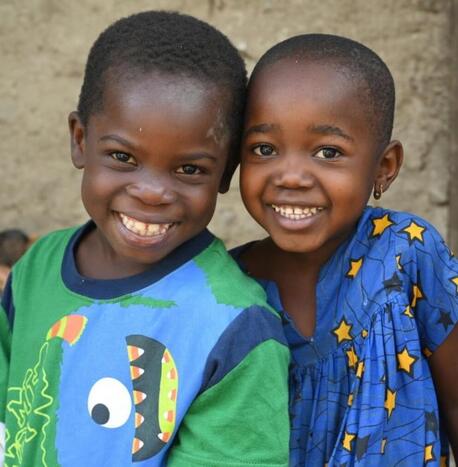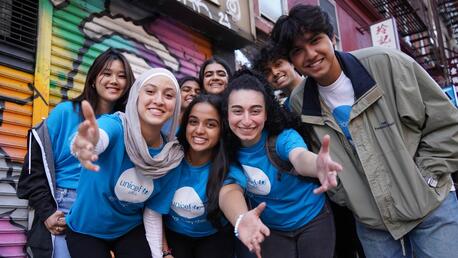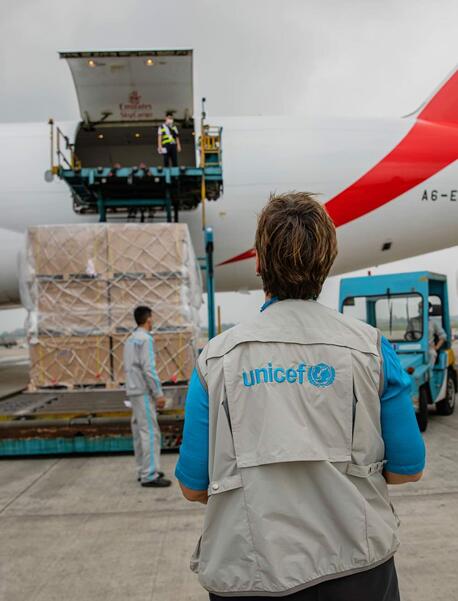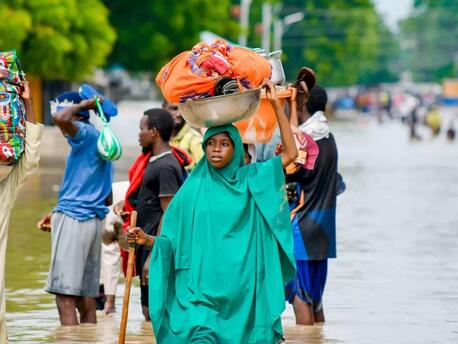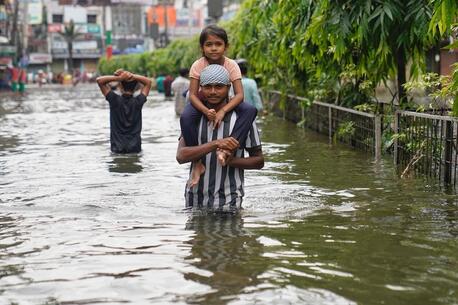
UNICEF Aids Children After Catastrophic Flooding in Bangladesh
UNICEF is working with partners to deliver emergency support to families in eastern Bangladesh following the worst flooding in 34 years. More help is needed.
Destitute families need urgent support
Since Aug. 17, 2024, unprecedentedly heavy monsoon rains combined with the release of water from upstream sources have overwhelmed eastern Bangladesh. Swollen rivers breached their banks, submerging homes, streets and fields, forcing families to evacuate in search of higher ground.
Almost 5.8 million people, including 2.3 million children, across 11 districts are grappling with the aftermath of the flooding.
The devastating floods in the eastern parts of Bangladesh are a tragic reminder of the relentless impact of extreme weather events and the climate crisis on children. — Emma Brigham, UNICEF Bangladesh Deputy Representative
“The devastating floods in the eastern parts of Bangladesh are a tragic reminder of the relentless impact of extreme weather events and the climate crisis on children, said Emma Brigham, Deputy Representative of UNICEF Bangladesh.
"Far too many children have lost loved ones, their homes, schools, and now are completely destitute," Brigham continued. "UNICEF is on the front lines providing water purification tablets, oral rehydration salts and other essential supplies, but more funds are needed to reach these children and prevent an even more devastating impact on their futures.”
Read the latest UNICEF Bangladesh situation report.
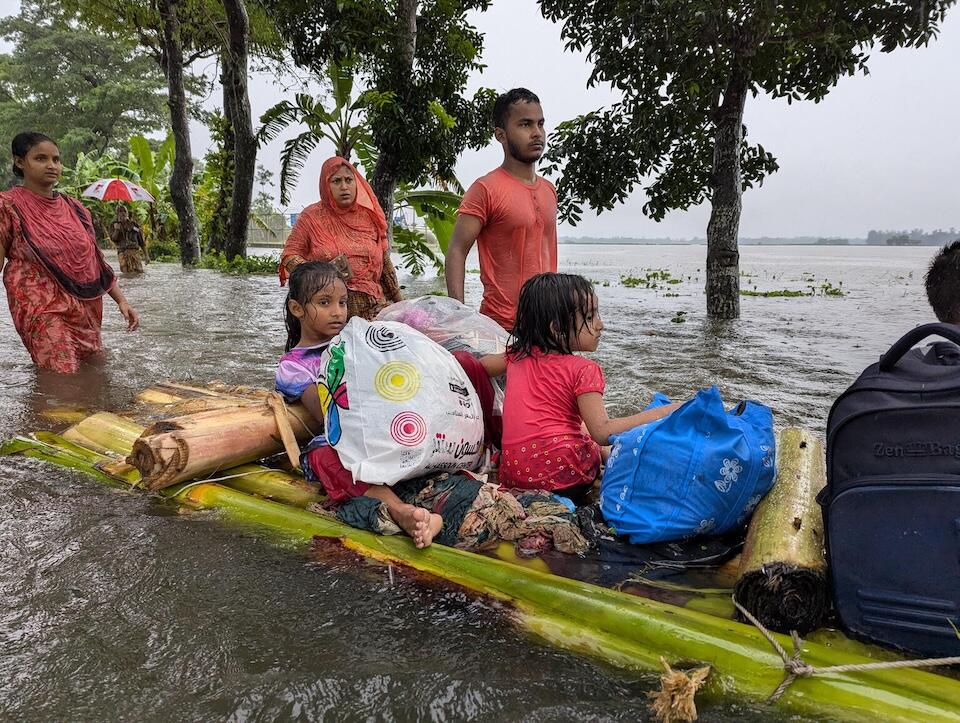
Access to safe water, sanitation and hygiene a top priority
UNICEF and partners including the Bangladesh Department of Public Health Engineering have reached more than 898,000 people affected by the flooding with key WASH (water, sanitation and hygiene) interventions. These include safe drinking water from mobile water treatment plants, jerry cans, hygiene kits, more than 3.7 million water purification tablets, floating latrines and temporary tube wells.
Living in stagnant water poses a dangerous health risk to children. "Right now, most of the children are suffering from acute watery diarrhea," said UNICEF Bangladesh Health Officer Dr. Hasnain Ahmed in Noakhali, Chittagong Division. "The hospitals are really struggling to manage these cases. At this moment, there is also a rise in respiratory diseases, skin infections and snake bites."
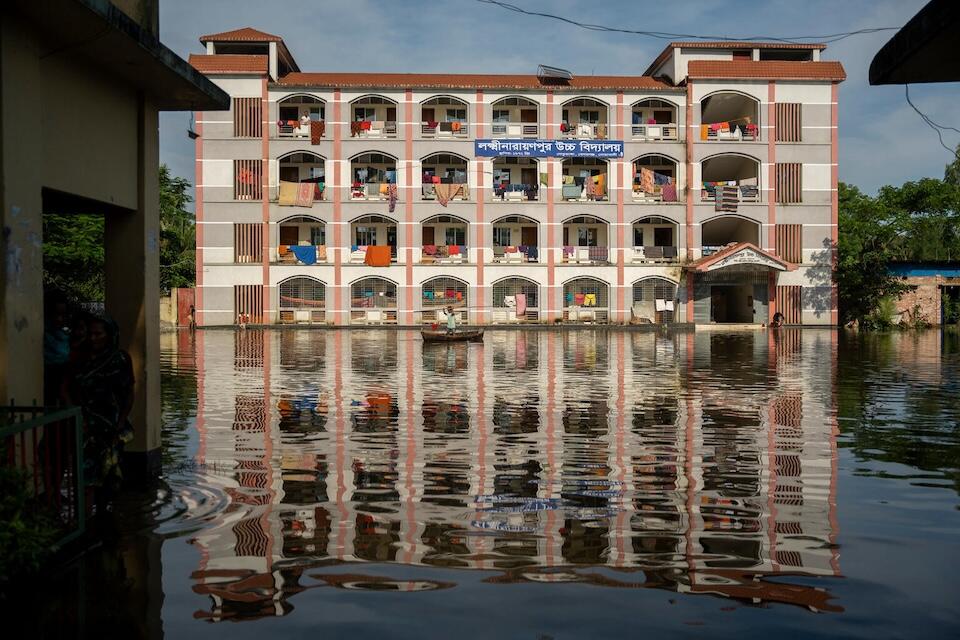
UNICEF supports health care, child protection services, malnutrition screenings and more
Health care facilities are overwhelmed. Patients are being treated outdoors and doctors are requesting more health support, more medicines and additional lifesaving supplies.
Over 32,000 children under 5 and pregnant women have received primary health care services from UNICEF-supported facilities and supplies. UNICEF is also providing child protection services, screening and treating children for malnutrition and delivering humanitarian cash transfers to help families meet immediate needs.
Prepositioned Education in Emergencies kits will be distributed to flood-affected schools to help children get back to learning.
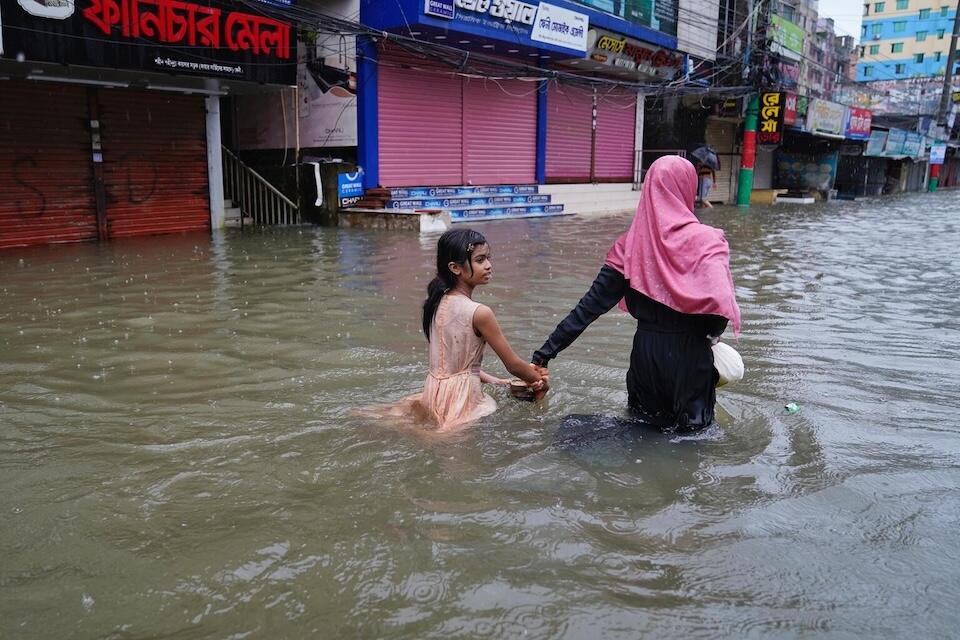
Compounding emergencies in Bangladesh
The recent floods come close on the heels of floods in northern Bangladesh and Cyclone Remal in May. Jointly, the three emergencies have impacted over 13 million people across Bangladesh, including 5 million children.
In response to these three emergencies, UNICEF urgently requires up to $35.3 million for critical, lifesaving and multi-sectoral interventions for children, as well as pregnant and lactating women.
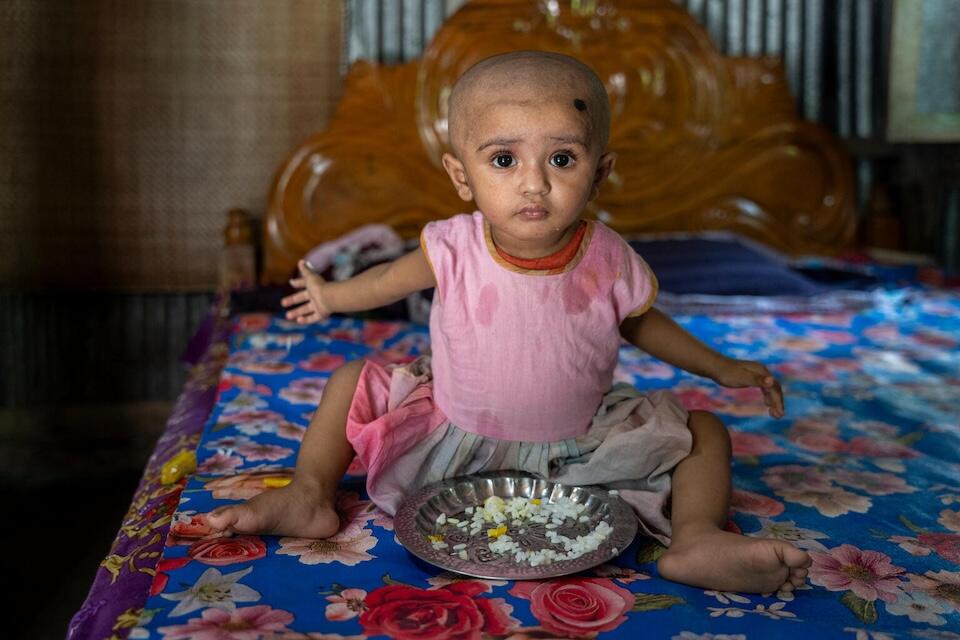
Children caught in the crosshairs of the climate crisis
Climate change increases the frequency, severity and unpredictability of cyclones, floods and other extreme weather events affecting Bangladesh, underscoring that the climate crisis is fundamentally a child rights crisis.
According to the UNICEF Children’s Climate Risk Index, children in Bangladesh are the most exposed in the world to climate and environmental hazards.
Whenever and wherever children are in need, UNICEF is there to help. Support UNICEF today.
HOW TO HELP
There are many ways to make a difference
War, famine, poverty, natural disasters — threats to the world's children keep coming. But UNICEF won't stop working to keep children healthy and safe.
UNICEF works in over 190 countries and territories — more places than any other children's organization. UNICEF has the world's largest humanitarian warehouse and, when disaster strikes, can get supplies almost anywhere within 72 hours. Constantly innovating, always advocating for a better world for children, UNICEF works to ensure that every child can grow up healthy, educated, protected and respected.
Would you like to help give all children the opportunity to reach their full potential? There are many ways to get involved.
